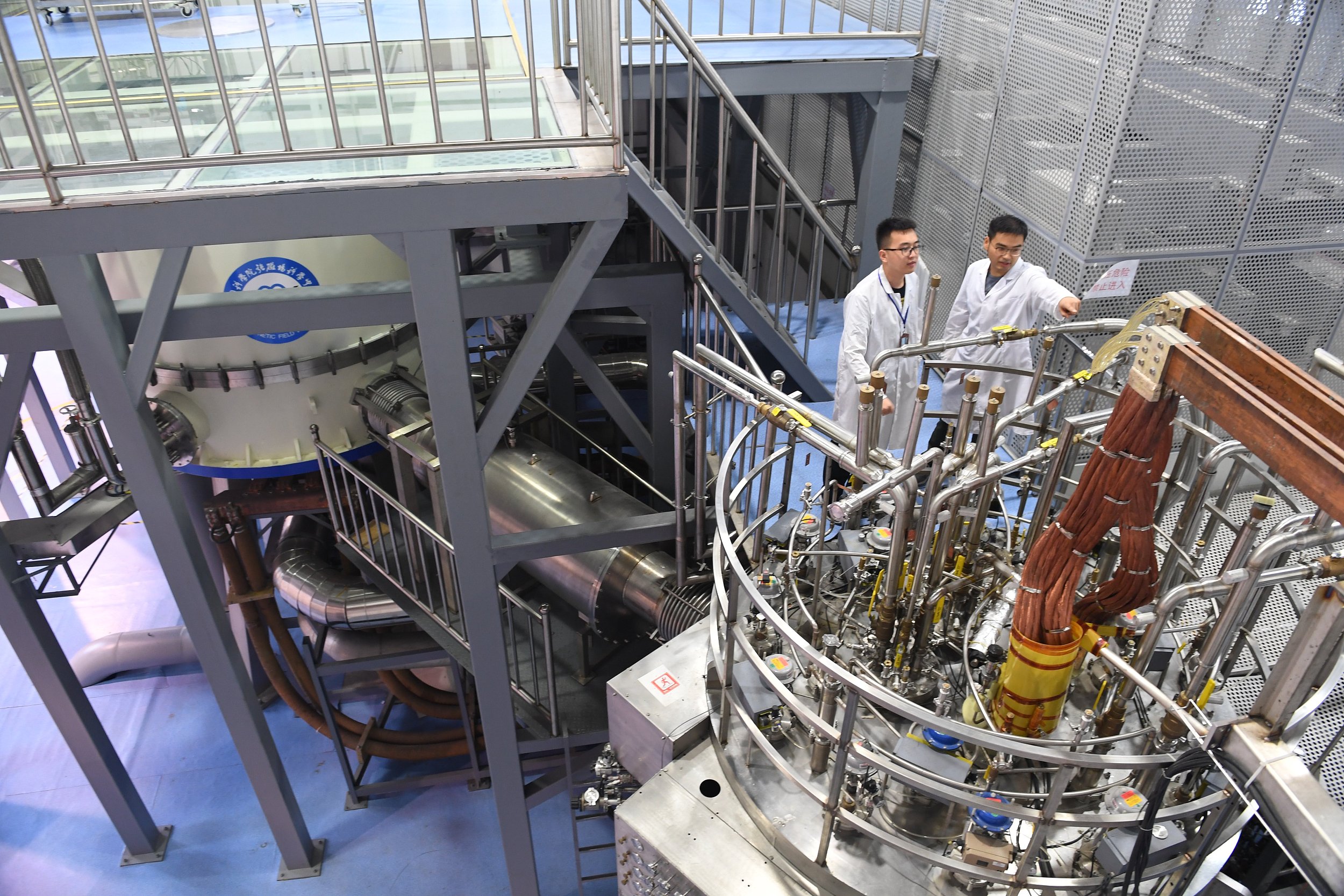Digital Technology Revolutionizes Agriculture
At the first solar term of the year Lichun, or Beginning of Spring, a farmer is ploughing via machinery in Hengyang, central China's Hunan province.
(PHOTO: XINHUA)
By LU Zijian
Agricultural activities have experienced great changes in the recent past, especially with the rapid evolution of digital technology. The production capability of the agricultural industry in China has shifted to a new level with the introduction of technologies like big data, artificial intelligence and Internet of Things (IoT).
Better breeding
Seeds to the agricultural industry are like chips to a computer, making breeding of new and improved plant species of great importance. For example, phenotyping, the process of measuring and analyzing observable plant characteristics, helps to single out the best genotypes of plants that could adapt to different environments and enhance crop yield.
However, phenotyping is one of the most time and labor consuming work in traditional crop breeding, as it takes more than half of the day to conduct just one round of plant height measurement in the field, which is almost the simplest task in phenotyping, according to Jin Shichao, associate professor at Nanjing Agricultural University.
Digital technologies have now accelerated this process to a large extent. It takes only 30 minutes to complete the automated acquisition of data mentioned above with 3D phenotyping measurement technologies like LiDAR. The accuracy and efficiency are also highly enhanced, as the data covers every single plant in the field, a great leap from sample estimation to overall analysis.
In addition, active remote sensing technologies like LiDAR can conduct observation at night, which has helped to reveal the rhythm of corn phenotypes from day to night and its response to changes in the environment, said Jin.
Jin also said that his research team developed a prediction model incorporating LiDAR and spectrum, which is able to predict wheat yield two months in advance.
More productive planting
The integration of digital technology and traditional agriculture generates better products for people.
In a strawberry greenhouse base in Chengdu, Sichuan province, a single worker can now carry out fertilization and water drop irrigation in over 100 mu (1 mu equals 666.7 square meters) of strawberries.
Yao Hongyan, a worker at the greenhouse, said that there is a smart data collection terminal based on agriculture IoT, which could make sure that fertilizer and water are dripped precisely to each single strawberry plant.
Both the quality and quantity of the strawberries have been greatly improved since the greenhouse base adopted intelligent management. The production soared to between 1,000 and 1,500 kilograms from 500 kilograms per mu, while the output in 2021 reached three million RMB.
The integrated fertilizer and water drop irrigation system has also been applied to blueberry planting. The amount of fertilizer and the time of water irrigation can be easily controlled with a smart phone, said Gao Yang, production supervisor of the blueberry greenhouse.
In addition, a weather monitoring station is also installed in the greenhouse to monitor light, humidity and temperature in real time, creating a better environment for strawberries to grow.
There is also a digital project which can monitor farms in Anhui province where the strawberries can be planted based on market demand.
Smarter storage and circulation
How to better store and sell agricultural products is a key issue to farmers once the harvest is done. The traditional circulation of the products is highly dependent on manpower, while modern agriculture, equipped with digital technologies, can cope with the situation much more easily.
In Guizhou province, there are warehouse enterprises that have introduced automated storage, selection, grading and packing of agricultural products, through a digitalized management system and quality control system.
Taking apples as an example, the selection equipment could measure the diameter, shape, surface and damaged part of each apple, and a special device could even measure an apple's degree of sweetness and sourness or whether it has mildew.
Big data plays an important role as well. Ncpgz.com, Guizhou's big data platform for agricultural products, covers over 3,700 vegetable production bases within the province, realizing the capture and smart analysis of sales and price data generated when the vegetables are sold to major wholesale markets for agricultural products all over the country.
In particular, through big data analysis, warehouses built close to the origin of agricultural products can quickly adapt their delivery to the dynamic need of the market.
Blockchain technologies like distributed data storage, point-to-point data transmission and encryption algorithms are also used in the operation of such warehouses, which is crucial to the storage, extraction and analysis of data in the entire supply chain of agricultural products.
Relying solely on labor is no longer how agriculture works today, and the flourishing of science and technology, especially digital technologies, is leading to a more productive and efficient modern agriculture system in China.



